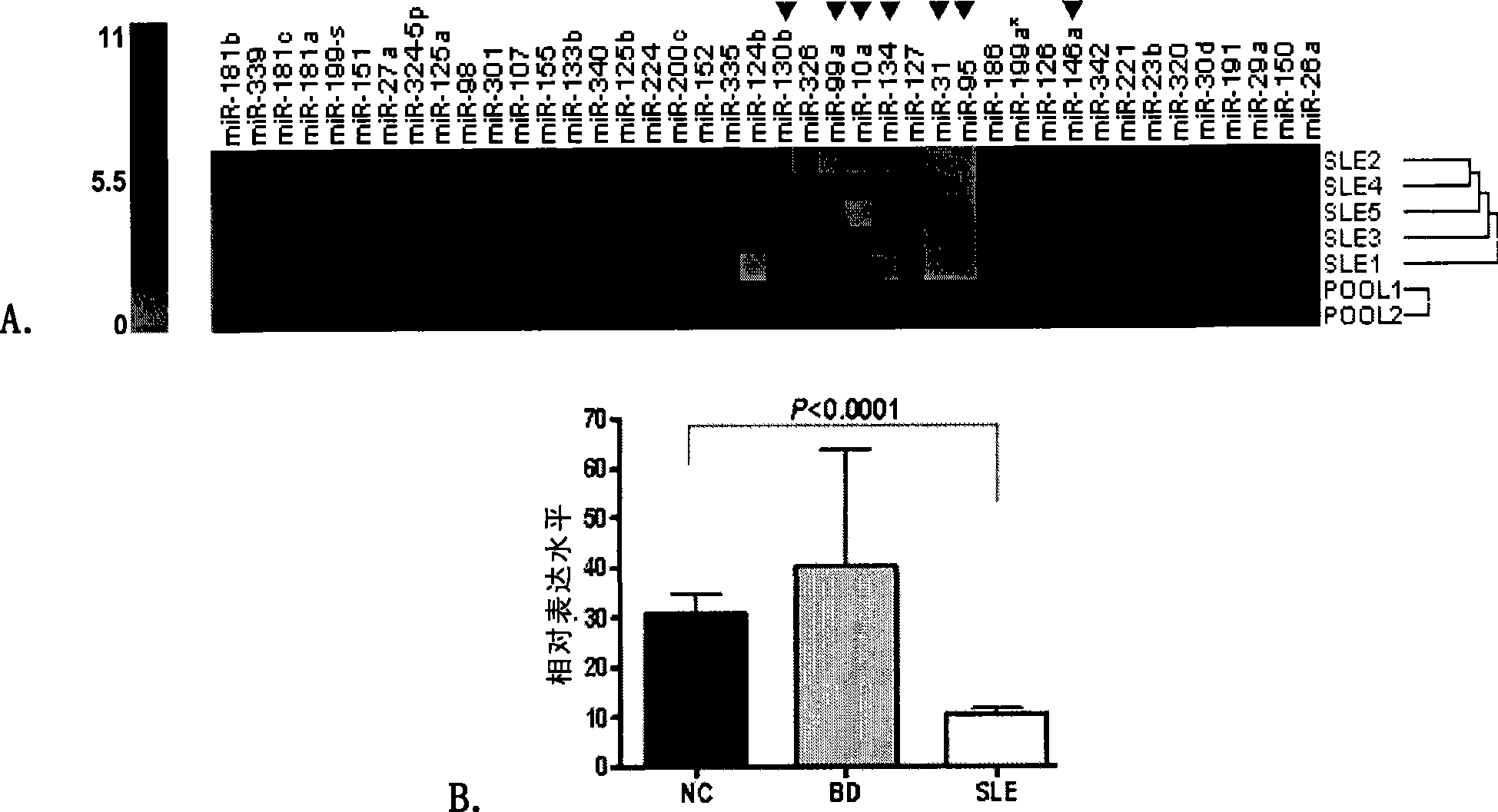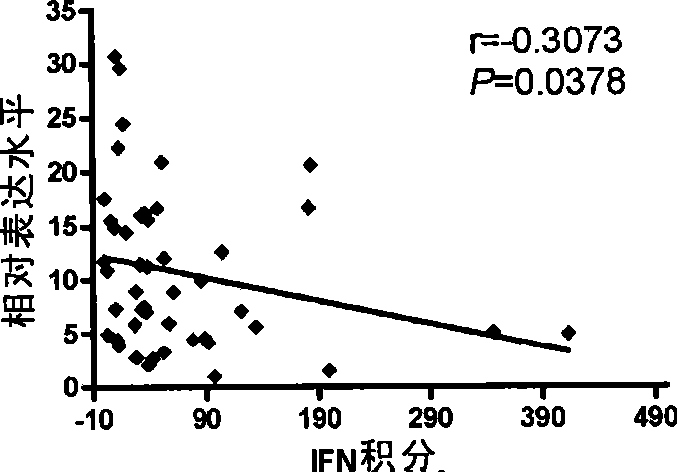Use of miRNA genes in systemic lupus erythematosus disease diagnose and treatment
A lupus erythematosus, systemic technology, applied in gene therapy, allergic diseases, DNA/RNA fragments, etc., can solve the problems of not knowing the impact of immune diseases, not reporting the relationship between systemic lupus erythematosus, etc.
- Summary
- Abstract
- Description
- Claims
- Application Information
AI Technical Summary
Problems solved by technology
Method used
Image
Examples
Embodiment 1
[0175] Example 1 There are differences in the expression levels of a group of miRNAs between SLE patients and normal controls
[0176] In order to explore the role of miRNAs in SLE, the inventors used Real-time PCR to study the differences in the expression levels of 156 mature miRNAs in the peripheral blood of SLE patients and normal controls.
[0177] It was found that the expression levels of 42 miRNAs in SLE patients were significantly lower than those of normal people, and the expression levels of 7 miRNAs including miR-146a were reduced by more than 6 times, see figure 1 A and Table 1.
[0178] Table 1
[0179] name Sequence (GenBank accession number) SEQ ID NO: miR-146a 5'UGAGAACUGAAUUCCAUGGGUU 3'(MI0000477) 2 miR-130b 5'CAGUGCAAUGAUGAAAGGGCAU 3'(MI0000748) 4 miR99a 5'AACCCGUAGAUCCGAUCUUGUG 3'(MI0000101) 5 miR-10a 5'UACCCUGUAGAUCCGAAUUUGUG 3'(MI0000266) 6 miR-134 5'UGUGACUGGUUGACCAGAGGGG 3'(MI0000474) 7 miR-31 ...
Embodiment 2
[0182] Example 2 miR-146 expression signal is negatively correlated with disease activity and kidney involvement
[0183] According to the previous data results of the present inventors, the correlation between the expression level of miR-146a and diseases was further studied.
[0184] The results showed that miR-146a in SLE patients was significantly lower than that in the normal control group, and the non-parametric Mann-Whitney test showed that the difference was statistically significant (all P values figure 2 a.
[0185] The level of miR-146a in the active group of SLE patients (SLEDAI score ≥ 5) was significantly lower than that in the stable group (SLEDAI score 0-4 points), and the non-parametric Mann-Whitney test showed that the difference was statistically significant (P=0.0080), see figure 2 a.
[0186] On this basis, further application of Spearman one-tailed correlation test found that there was a negative correlation between the SLEDAI score and miR-146a (r=-...
Embodiment 3
[0189] Example 3 The level of miR-146a is related to the overactivation of type I interferon pathway
[0190] Existing research results have shown that the activation of IRAK1 and TRAF6 can lead to the production of downstream type I interferon through various signaling pathways, and the type I interferon pathway plays a key role in the pathogenesis of lupus. The inventors reflected the degree of activation of the type I interferon pathway in patients by detecting the mRNA expression levels of three representative genes downstream of the type I interferon, and explored the relationship between the decreased expression level of miR-146a and the type I interferon pathway in SLE . The results of Spearman's two-tailed correlation test showed that there was a negative correlation between the expression level of miR-146a and the integral level of IFN (r=-0.3073, P=0.0378), see image 3 .
PUM
 Login to View More
Login to View More Abstract
Description
Claims
Application Information
 Login to View More
Login to View More - R&D
- Intellectual Property
- Life Sciences
- Materials
- Tech Scout
- Unparalleled Data Quality
- Higher Quality Content
- 60% Fewer Hallucinations
Browse by: Latest US Patents, China's latest patents, Technical Efficacy Thesaurus, Application Domain, Technology Topic, Popular Technical Reports.
© 2025 PatSnap. All rights reserved.Legal|Privacy policy|Modern Slavery Act Transparency Statement|Sitemap|About US| Contact US: help@patsnap.com



